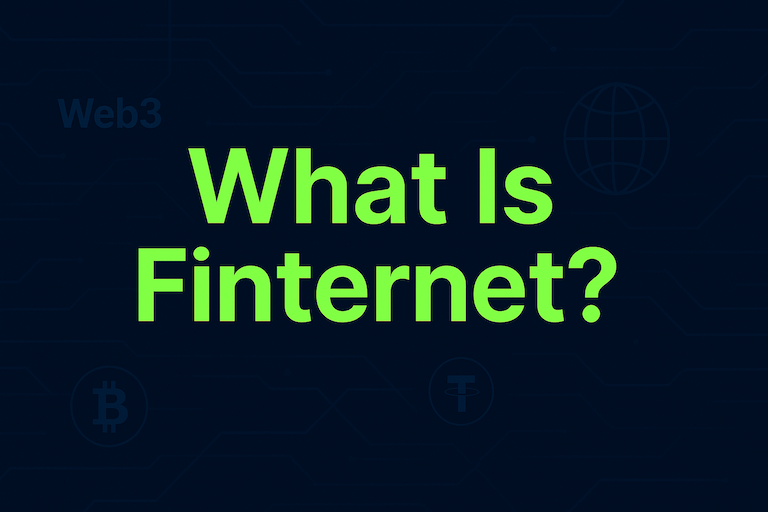How does Web3 design incentive mechanisms?
Apr 16, 2025
In the rapidly evolving landscape of Web3, incentive mechanisms play a crucial role in shaping user behavior and ensuring ecosystem sustainability. By utilizing decentralized finance (DeFi), tokenomics, and community engagement strategies, Web3 projects can effectively incentivize participation and contribution. These mechanisms are essential not only for attracting users but also for maintaining an active and engaged community. As blockchain technology matures, understanding how these incentive structures function becomes increasingly important for developers and users alike. This blog post will explore the various ways Web3 designs its incentive mechanisms, highlighting their significance in driving growth and innovation.
Understanding Incentive Mechanisms in Web3
Incentive mechanisms are fundamental to the success of Web3 applications and platforms. They are designed to align the interests of various stakeholders within the ecosystem, including users, developers, and investors. By creating a system where participants are rewarded for their contributions, Web3 projects can foster a collaborative environment. These mechanisms often leverage cryptocurrencies and tokens to provide tangible benefits to users. Understanding how these incentives work can help stakeholders make more informed decisions.
Users can earn rewards through participation in governance.
Developers are often incentivized through token allocations and grants.
Investors may receive returns based on the success of the platform.
Community members can gain recognition and influence within the ecosystem.
Early adopters may benefit from appreciation in token value over time.
Tokenomics as a Driving Force
Tokenomics refers to the economic model of a cryptocurrency or token, including its supply, distribution, and utility within the ecosystem. Properly designed tokenomics can significantly enhance the effectiveness of incentive mechanisms. In Web3, tokens often serve multiple purposes, such as utility, governance, and staking. By ensuring that tokens have real utility, projects can encourage users to engage more actively. This multifaceted approach to token design is essential for creating sustainable ecosystems.
Utility tokens allow users to access specific features or services.
Governance tokens empower users to participate in decision-making processes.
Staking tokens can provide rewards for those who lock up their assets.
Deflationary mechanics can create scarcity and increase token value.
Incentives for liquidity provision can enhance market stability.
Community Engagement Strategies
Community engagement is vital for the longevity and success of Web3 projects. Building a strong community helps drive user retention and encourages active participation. Various strategies can be implemented to enhance community engagement, including social incentives and collaborative initiatives. By fostering a sense of belonging and shared purpose, projects can motivate users to contribute in meaningful ways. Engaged communities often lead to organic growth through word-of-mouth and user-generated content.
Regular community events can foster interaction and collaboration.
Incentives for content creation can boost community contributions.
Feedback mechanisms ensure that users feel heard and valued.
Ambassador programs can empower dedicated users to promote the project.
Gamification techniques can make participation more enjoyable and rewarding.
Decentralized Finance (DeFi) and Incentives
Decentralized finance has revolutionized the way incentive mechanisms are designed within the Web3 space. DeFi platforms often incorporate innovative reward structures that encourage users to participate in lending, borrowing, and liquidity provision. By utilizing smart contracts, these platforms can automate reward distribution and create transparent incentive systems. The rise of yield farming and liquidity mining exemplifies how DeFi has transformed traditional financial incentives into more engaging and profitable opportunities for users.
Yield farming allows users to earn rewards by providing liquidity.
Liquidity mining incentivizes users to participate in specific pools.
Staking mechanisms offer returns for locking up tokens.
Interest-bearing accounts can attract users looking for passive income.
Automated market makers (AMMs) enhance trading efficiency and rewards.
Governance and Decentralization
Governance is a critical aspect of Web3, and well-structured incentive mechanisms can enhance user participation in governance processes. By allowing token holders to vote on proposals, projects can distribute power more equitably among their communities. This decentralized approach ensures that users have a say in the future direction of the project, aligning their interests with its success. Incentives for active governance participation can motivate users to stay informed and engaged with ongoing developments.
Token holders can propose changes to the protocol.
Voting rewards can incentivize increased participation.
Transparency in decision-making fosters trust within the community.
Regular updates on governance outcomes keep users informed.
Collaborative governance models can lead to innovative solutions.
The Future of Incentive Mechanisms in Web3
As the Web3 landscape continues to evolve, so too will the incentive mechanisms that underpin it. Emerging trends suggest a shift toward more personalized and adaptive incentive structures that cater to individual user preferences. Innovations in artificial intelligence and data analytics may play a role in designing these tailored experiences. Moreover, the integration of cross-chain technologies could expand the reach and effectiveness of incentive mechanisms across various ecosystems. Ultimately, the future of Web3 will rely on the ability of projects to create compelling incentives that drive engagement and foster loyalty.
Personalized rewards can enhance user satisfaction.
Cross-chain incentives may promote interoperability.
AI-driven analytics can optimize reward distribution.
Dynamic incentive structures can adapt to market conditions.
Community-led initiatives may shape the future of incentives.
Conclusion
Incentive mechanisms are at the heart of Web3's growth and sustainability. By understanding and effectively designing these mechanisms, projects can ensure active participation and foster vibrant communities. As Web3 continues to mature, the importance of innovative and adaptive incentive structures will only increase. Stakeholders must remain vigilant and responsive to the changing landscape, ensuring that their incentive designs align with user expectations and technological advancements.
Start your safe cryptocurrency journey now
Fast and secure deposits and withdrawals, OSL safeguards every transaction !


